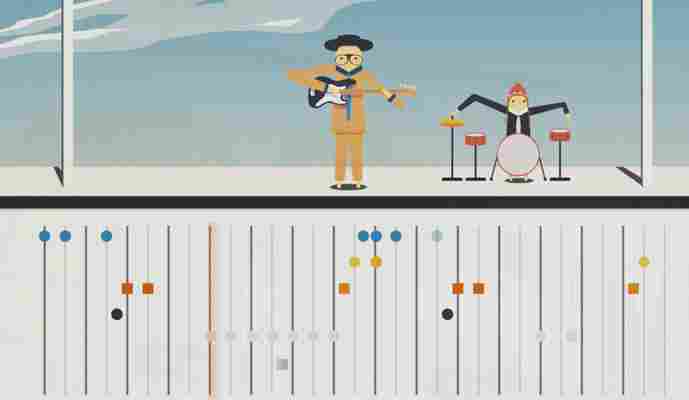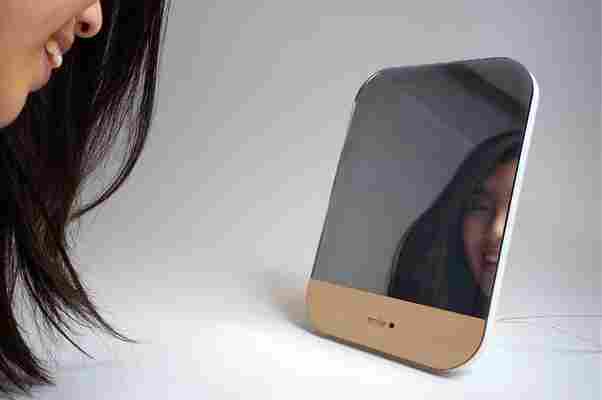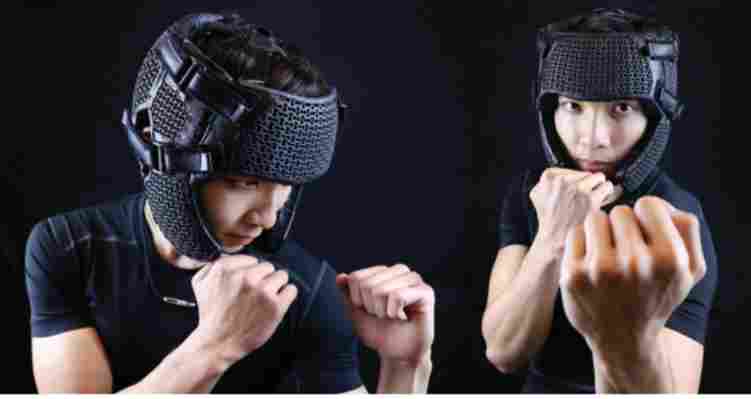It’s common for design schools to put their students' thesis projects on display. Brendan McGetrick, a London-based curator, had the idea to gather the best projects from design schools around the world into a mega-exhibition called the Global Grad Show. This week, the third annual Global Grad Show opened in Dubai during Dubai Design Week. Submissions from 92 schools were reviewed by McGetrick and a panel of judges that included curator Aric Chen of Hong Kong’s M+ museum and architecture critic Edwin Heathcoate of The Financial Times . The projects selected for the show represent well-known institutions like the Massachusetts Institute of Technology along with lesser-known schools in Serbia, Uganda, Peru, Malaysia, and New Zealand.
The projects include physical objects (among them, several types of affordable children’s furniture and a number of devices for purifying water). But there are also lots of apps and ways of using them. While a few of the proposals could be thought of as luxury items, many more would serve the world’s disabled and disadvantaged populations, the result of McGetrick’s desire, he says, "to demonstrate how the brightest young minds are designing the future" for everyone.

A graphic from a program that lets kids capture sounds from their surroundings, then transform them into musical tracks.
While working in a children’s hospital in Paris, Quentin da Silva (of the Strate School of Design) came up with an idea for reducing feelings of isolation among young patients. His system lets kids capture sounds from their surroundings, then transform them into musical tracks. An app enables kids to share their creations with an online community of hospital-bound children.
Some ideas take just a few words to explain: Marisela Sanabria of the National Autonomous University of Mexico realized she could store a tent inside a hiking pole. With the pole stabbed into the ground, the tent hooks over its handle; pegs that had been attached to the pole anchor the temporary shelter.

Smile Mirror.
Studies show that smiling can produce feelings of well-being. Using a mirror, a camera, and software that detects facial movements, Smile Mirror shows users their faces only if they’re smiling. Originally intended for cancer patients, the device is meant to people feel better about themselves, according to its designer, Berk Ilhand of New York’s School of Visual Arts.

He Chang (Alex) Teo's newly designed helmets.
He Chang (Alex) Teo of the National University of Singapore hopes to reduce traumatic head and brain injuries associated with combat sports. While traditional helmets absorb or dissipate impact, his new helmets redirect impact outward. (It uses a distinctive microarchitecture applied to a nylon derivative.) Like many of the Global Grad Show participants, Teo is actively seeking commercial backing for his product. (Meanwhile, he enjoys Dutch-style kickboxing, which he learned as an exchange student in Holland.)
Aaron Ethan Green of Brooklyn’s Pratt Institute was one of many students who addressed problems associated with dementia. His aptly named Pillbox for Clothes is a set of hanging racks that helps Alzheimer’s patients (and their caregivers) organize a week’s wardrobe, eliminating the stress of decision-making. Green hopes to patent the product.
Pillbox for Clothes.
According to Alexander MacKay, Chris Wheeler, William Held, and Utku Unlu of NYU Abu Dhabi, “millions of Arabic documents remain locked in PDFs that can’t be searched, copied, or analyzed.” They designed an app that lets Arabic-speaking residents of refugee camps earn income by transcribing documents remotely on behalf of businesses, government and nongovernment agencies, and libraries. A pilot program is being established in collaboration with the United Nations High Commissioner for Refugees. All 200 projects can be seen at globalgradshoom .

Leave a Reply